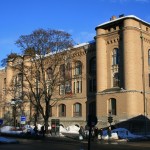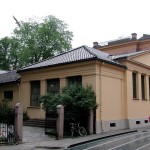Methodology of Archaeological Simulation.
Meeting of the Special Interest Group in Complex Systems Simulation
Following its creation at the CAA2014 in Siena the Special Interest Group in Complex Systems Simulation invites all researchers with an interest in computational modelling to join the discussion on the Challenges and potential of simulation in archaeology.
This year the main focus of the meeting is on the methodology of simulation. The roundtable will consist of a series of lightning talks (5mins) on the particular methodological challenges of modelling complex systems given by experts in archaeological simulation, and followed by a roundtable discussion open to the audience (10 mins). The total time will be approx. 3.5 hrs: 12 speakers x (5mins talk + 10mins discussion) + introduction and conclusions. We were promised a slot with a lunch break so there will be ample opportunities for further discussion. Below the topics and speakers we have approached. Please note that this is a provisional Schedule.
Why Model?
Juan Barceló
Modelling and simulation from an epistemological perspective. What is modelling, how does simulation differ from other types of modelling? What are the goals of simulation? What can we achieve with it? What are the strengths and limitations of the Method.
What is complexity theory and why should we care about it
Stefani Crabtree
What is complexity science? What is complexity? What is the difference between complex and complicated?
Examples? What is the big deal of ‘emergence’ about? Isn’t complexity science just for physicist and mathematicians?
Simulation as middlerange research
Ben Davies
How do we build the artificial society and the world around it? What do we include and what leave out of a model?
How do we know that the model is a correct representation of the realworld system?
Models: ‘small and elegant’ or ‘complicated but realistic’?
Colin Wren
Theory driven and data driven models. Models that aim to emulate and models that aim to explain. Are these really two modelling paradigms or a gradient depending on the focus of different models? When do we use each type? How to struck a balance between generalist results and the need to validate the models against archaeological data?
ABMs, because they’re worth it? Alternatives to our favourite method
Elizabeth Gallagher
Archaeologists LOVE agentbased modelling, but is it the only method? What other types of simulation are out there?
Why and when we may prefer to use them?
Fancy doing some networks?
Tom Brughmans
What is network science? Are network science and complexity science related? What is network data? What can and what cannot (shouldn’t) be represented as networks? Examples of archaeological networks.
Building on expert advice to create an informed model
Philip Verhagen
How to draw on expert knowledge to create an informed model? What are the challenges of translating ‘what we already know’ into realistic simulation setup? How do we get parameter values for things we cannot derive from the archaeological record?
Lessons already learned: drawing from the best software practice
Iza Romanowska
The technical side of things. Different languages, which one to choose? What is ‘good code’? The standards of development, testing, documenting and disseminating.
Proof of concept verifying ABM with analytical methods
Irmela Herzog
Using an analytical method to verify (check correctness) of a simulation. Bugs lurk in almost every code, testing results of ABMs against analytical methods (spatial analysis, statistics, etc) can help with detecting and correcting them. How to choose the right method? What type of ‘artificial data’ to compare and how?
Validation: the painful moment when the model meets the data
Florencia del Castillo
Validation is a big topic in simulation, what is it all about? Do all models need to be validated? How to choose which data to validate the model against? How to deal with uncertainties and biases of the data? Do we need to model taphonomic processes or biases caused by uneven history of research? What if the model does not agree with the data? What is ‘overfitting’?
Model selection: what is the ‘best’ model? Xavi Rubio Campillo
Even if ‘all models are wrong but some are useful’ are some more wrong than other? Techniques used to determine which models fit the data better.






